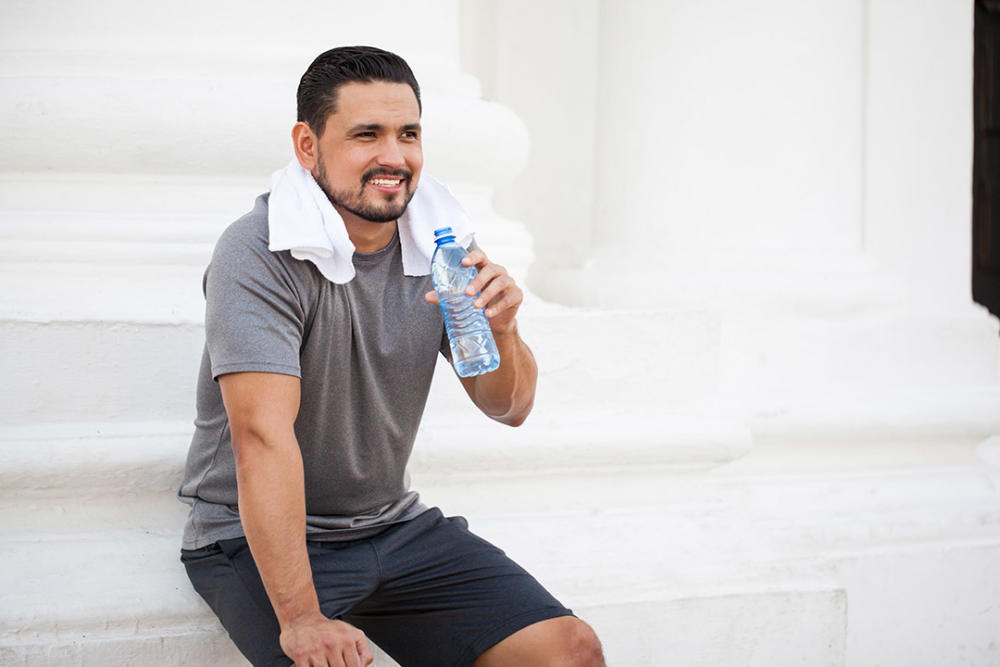Globally, heart disease is the leading cause of death, taking more lives than cancer and lung diseases combined. For survivors entering rehabilitation therapy, preventing another attack is a high priority. With so many people affected, it’s no wonder why people are looking for ways to protect themselves from a first (or repeat) attack. Trying out a new weight loss exercise at home isn’t the only habit people can adopt. Here are seven heart-healthy habits you can do to stay in touch with your heart this Valentine’s Day:
1. Get 7-9 Hours of Sleep
Sleep is the time when your body rests and heals. However, to do this, it needs the proper amount of time. Sleep happens in stages, and getting plenty of sleep in the crucial third stage— when your immune system is restored — requires plenty of time set aside each night. Although it varies for everyone, the average adult needs between seven to nine hours each night to maintain heart health.
2. Detox Your Environment
Typically, your environment is related to the people, objects, and places surrounding you. A toxic environment can affect your immune system. One factor, for example, could be stress from work, which adds unnecessary strain on your mental health and can affect your heart. Another factor is chemical products. Over time, we absorb chemicals from plastic, makeup, toothpaste, and even prescription drugs, which can build up in the body. Try to eliminate any negative factors weighing on your life and heart.

3. See a physical therapist
Rehabilitation therapy is the safest way to move again after heart disease disrupts your life. A licensed physical therapist will ease you into an active lifestyle immediately following a heart attack. Those who are proactive about preventing their first attack can also benefit from an active lifestyle. Activities like yoga, walking, and swimming help improve blood flow.
A physical therapist can create a personalized treatment plan for your needs, challenges, and goals. They help you:
- Stay accountable
- Improve mobility, strength, and endurance
- Improve your exercise stamina
- Manage pain
- Prevent Injuries and provide education on lifestyle changes and behaviors.
- Improve your overall health.
4. High on Fiber, Low on Sodium
Several factors that increase your chances of heart disease are beyond control. Many, like family history, can’t be erased. However, those who fall under the high-risk heart disease category can still take steps to lower their chances of heart disease. Diet plays a significant role in heart health. Many people go straight to working out to shed excess pounds without focusing on their diet. Ignoring your food habits will not help reduce the risk of heart disease. Every calorie consumed should have a purpose. For example, a diet consisting of high fiber and sodium foods will keep hearts clear of blood clots and reduce strain on aortic functions. And don’t cut out fats just yet. Like those found in avocados and olive oil, healthy fats boost heart health when used in moderation.

5. Make Oral Health a Priority
According to the American Heart Association, brushing your teeth twice daily for at least two minutes may lower the risk of cardiovascular diseases. Regular trips to the dentist can decrease your chance of having a heart attack. Proper oral hygiene (that means flossing!) reduces plaque levels, one of the leading culprits behind a heart attack.
Poor oral health usually starts with gingivitis. Gingivitis is a condition where plaque, a sticky film of bacteria, builds up on your teeth and around your gums, causing your gums to swell and bleed. When gingivitis is left untreated, this can develop into gum disease called periodontitis. Periodontitis is an infection that can lead to bone loss around the teeth and tooth loss in advanced stages. According to the Centers for Disease Control and Prevention, about 47% of American adults over age 30 have some form of periodontal disease. Bacteria from gum infections travel through your blood vessels, where they cause inflammation and damage; tiny blood clots, heart attack, and stroke may follow.
6. Stock Up on Vitamin C
As if you needed another reason to avoid catching the flu, colds, and other illnesses, lower your immune system, which makes it harder for your heart to take care of itself.
The following ten foods are great natural sources of Vitamin C:
- Plums
- Cherries
- Guavas
- Chili peppers
- Sweet yellow peppers
- Parsley
- Thyme
- Kale
- Kiwis
- Oranges

7. Start Slow with Lifestyle Changes
With so many ways to boost heart health, it’s easy to want to jump right into a massive lifestyle overhaul. Yet, that might not be in your best interest. Rehabilitation therapy focuses on getting heart disease survivors moving at a pace that won’t create any damage. Slow and steady wins the race for those looking to start from scratch. Making gradual changes will help you integrate healthy habits for good. Take each change one small step at a time. Don’t sign up for a triathlon this weekend if you’re starting a weight loss exercise at home. Instead, begin with ten-minute walks around the block. Are you starting a new diet? Integrate high-fiber food slowly so as not to upset your digestive system with a significant change. Would you like to relieve stress? Focus on one area in your life at a time, such as your work life.
Want more heart-healthy habits tips for living a healthy life? Contact a Foothills Sports Medicine Physical Therapy clinic near you!




